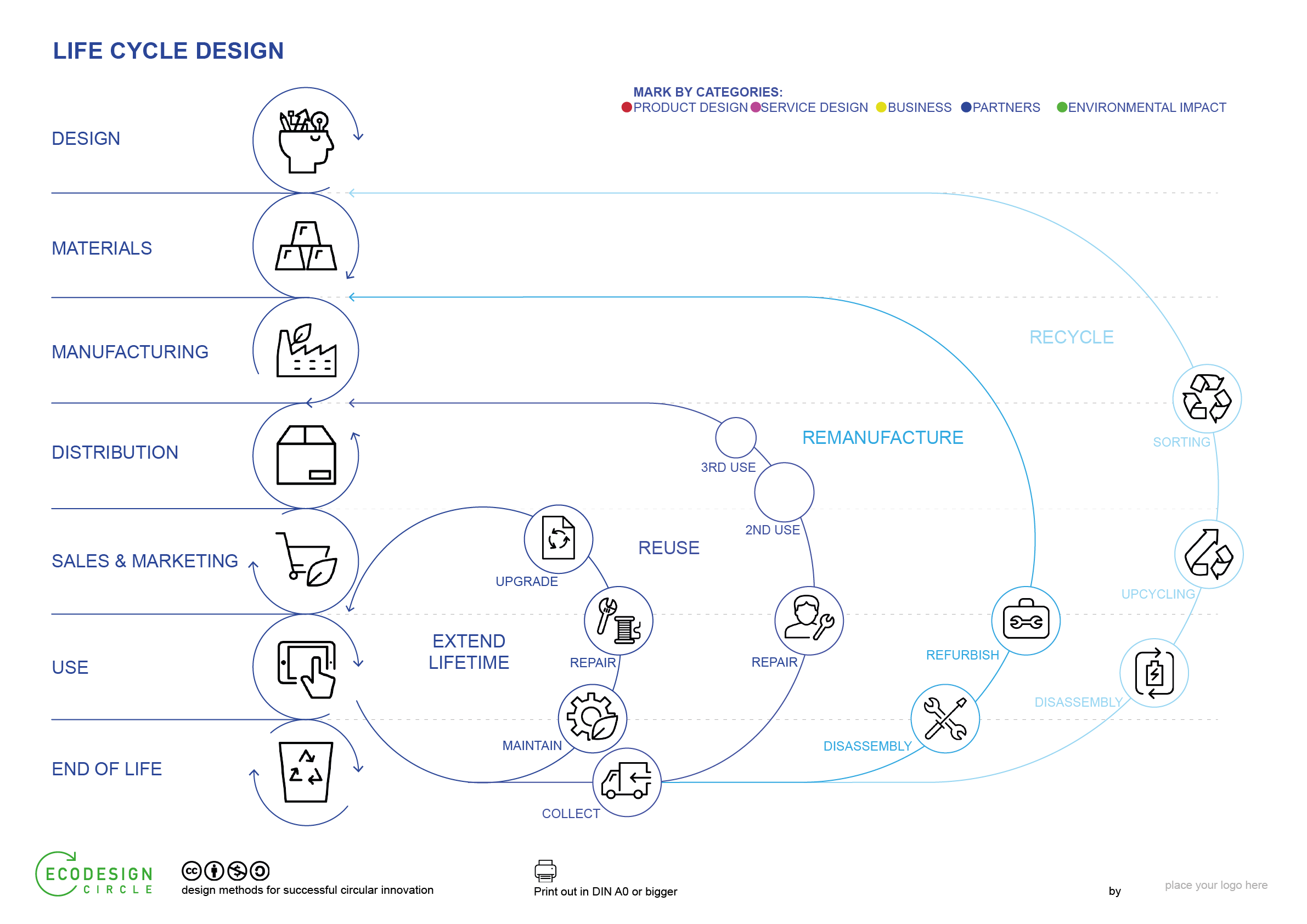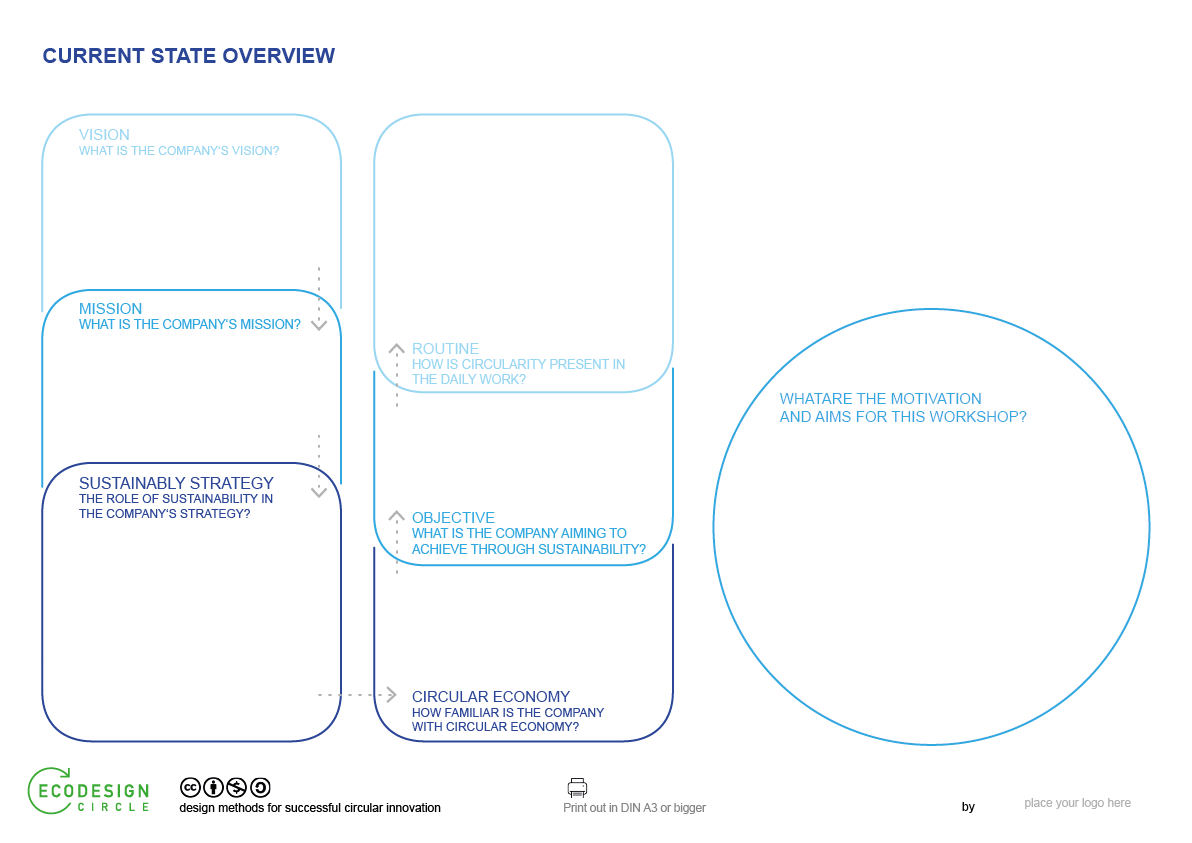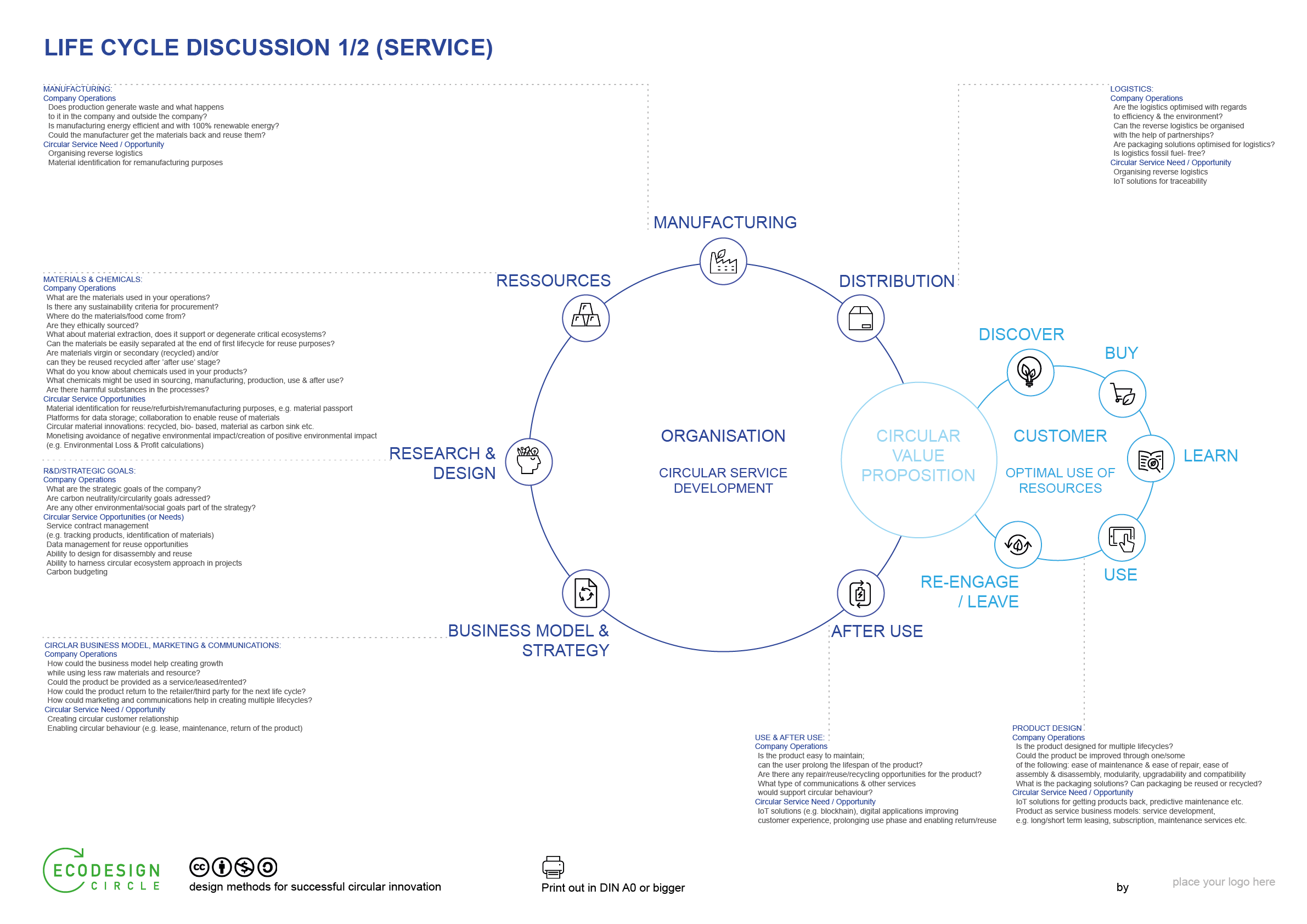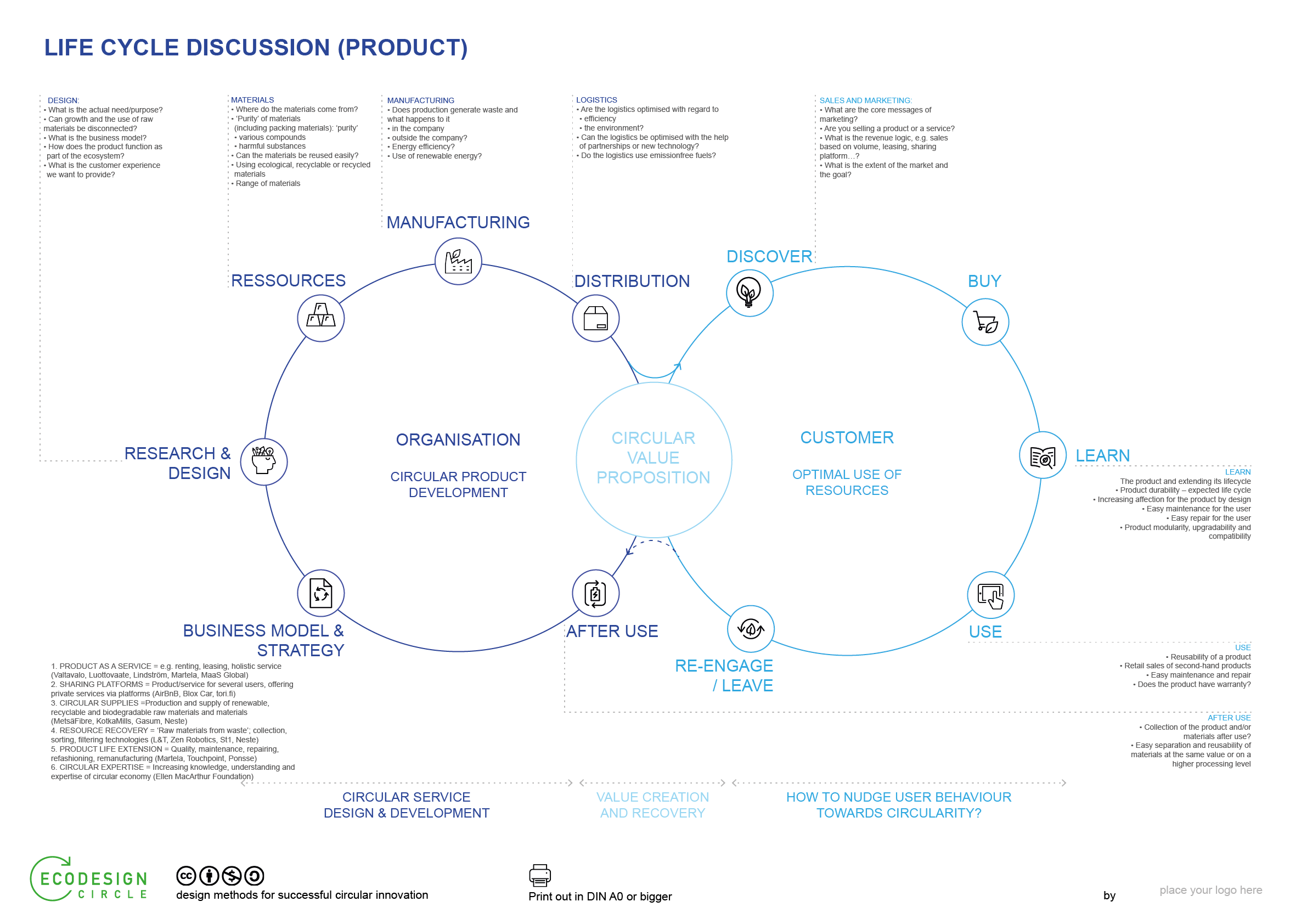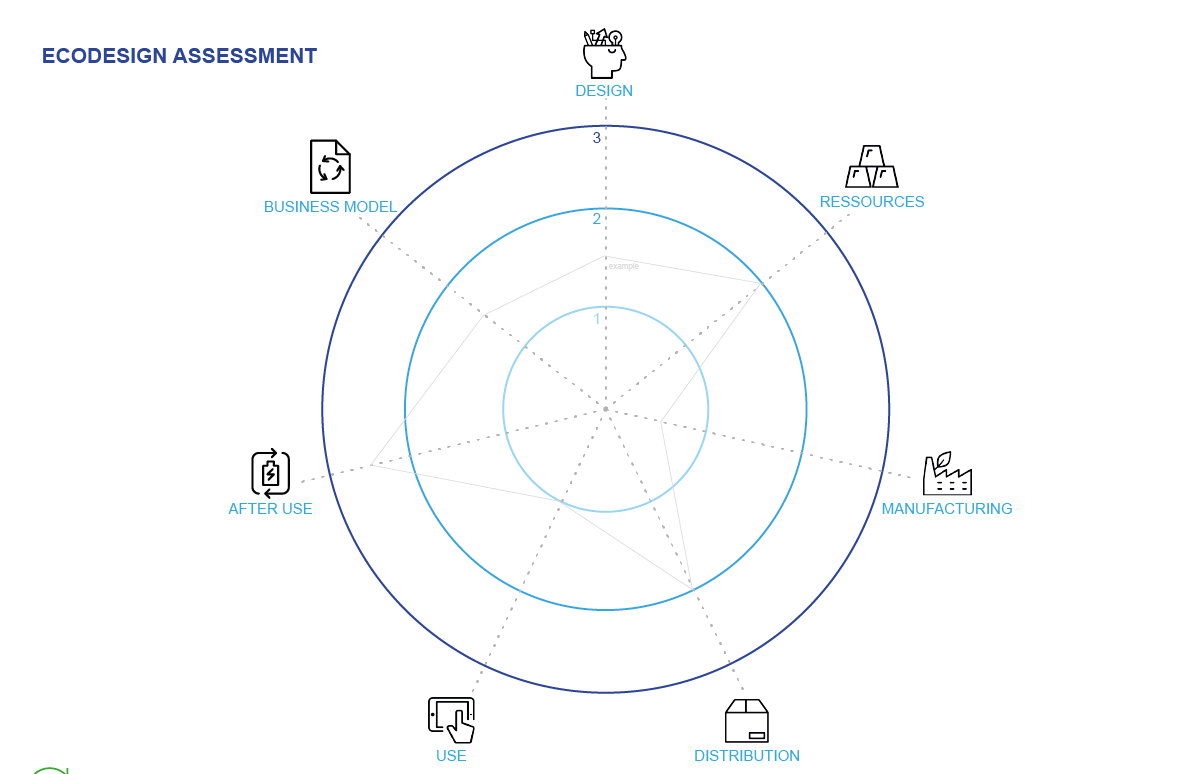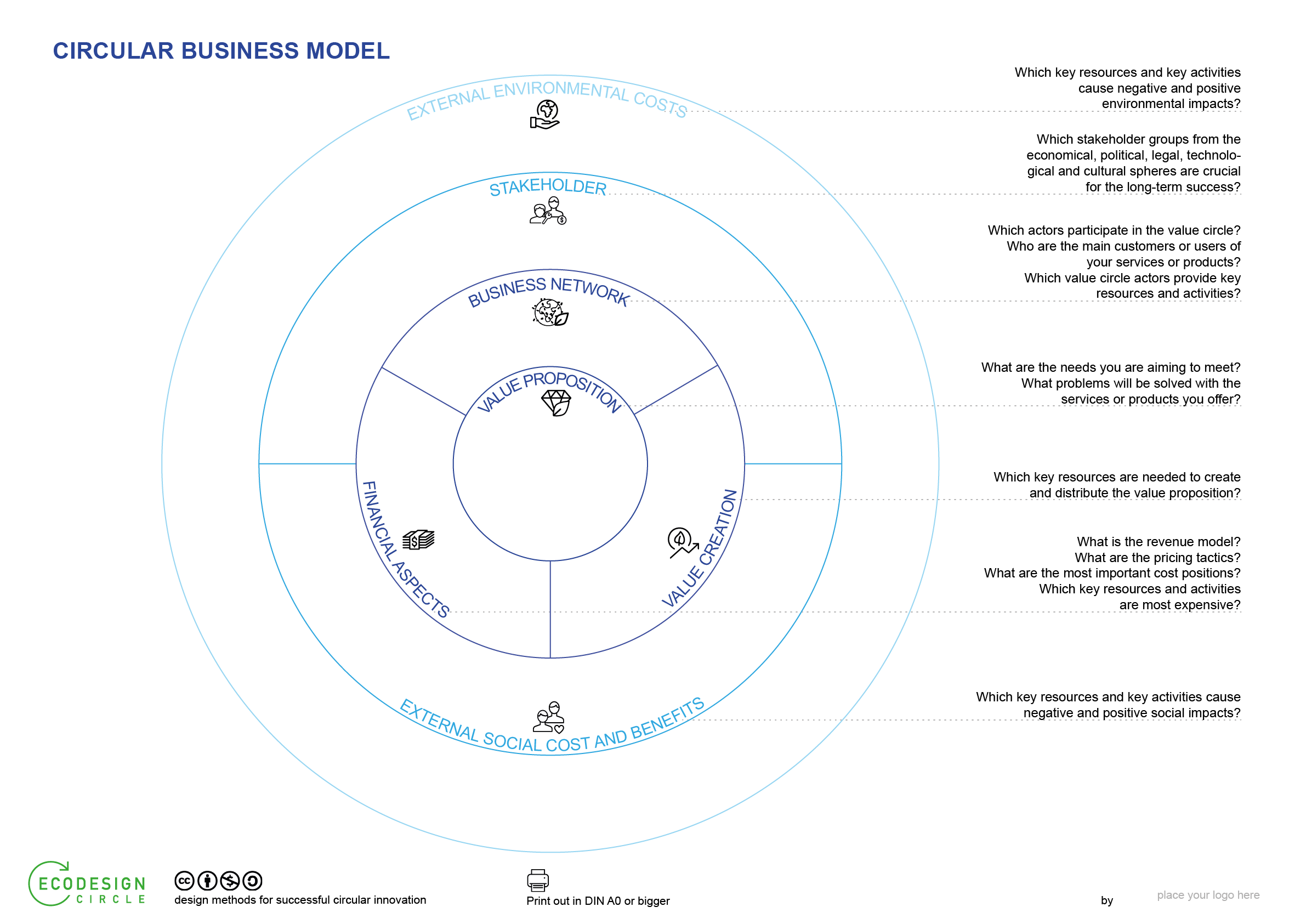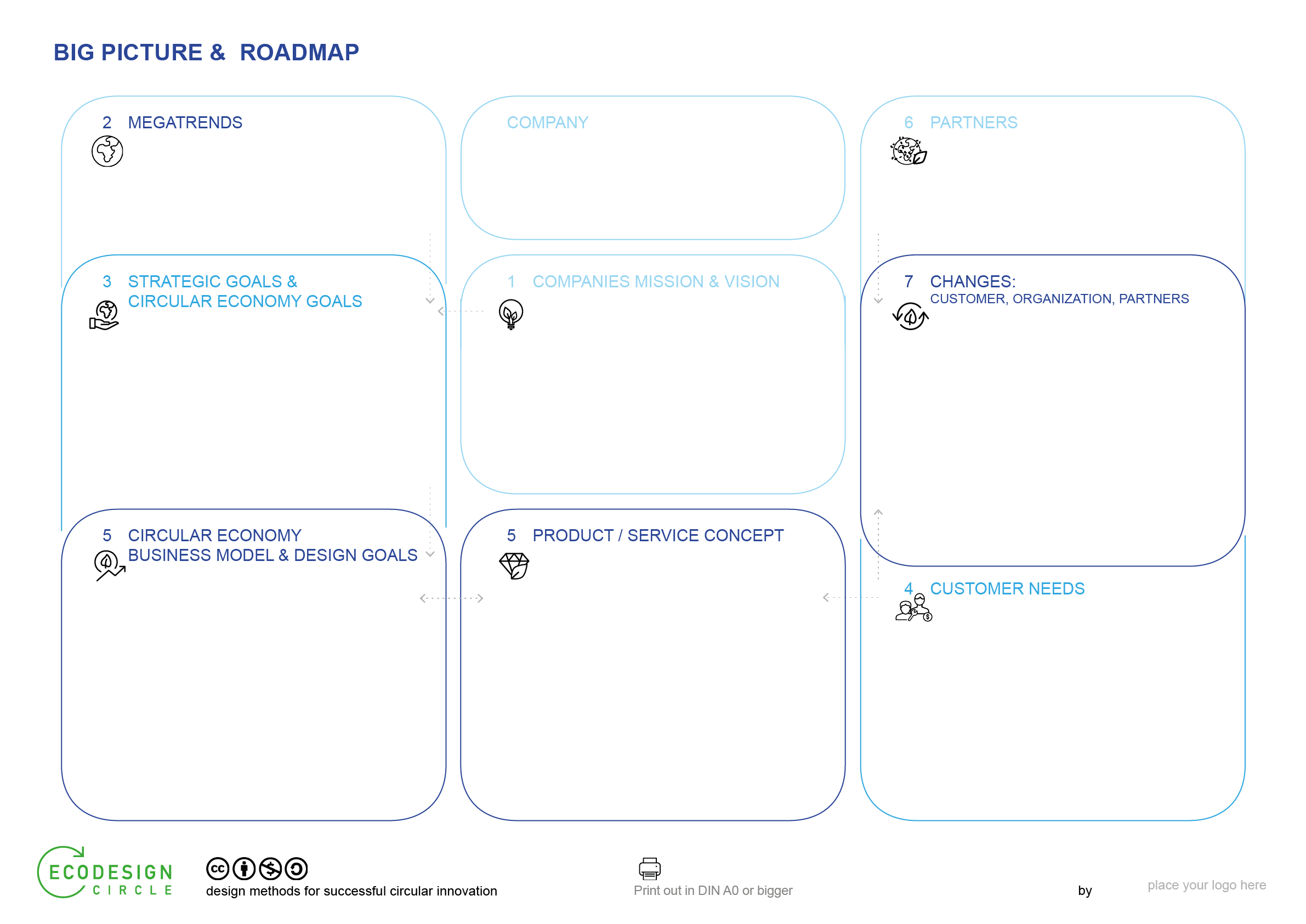Learn as a designer to implement circular economy to your work and sell it to your customers.
Design has the capabilty to creativly discover radical new ways to solve challenges, to combine seamingly unrelated to come up with unexpected ideas and solutions. And that’s what we need! Business as usual is not an option any more. The way we have acted and set up our economic world led us to where we are today. Design played a big role in paving the way we deal with goods today – but it can also play a big role in creating the change we need.
We have the opportunity to redesign everything!
Let circular design become integral part of your work!
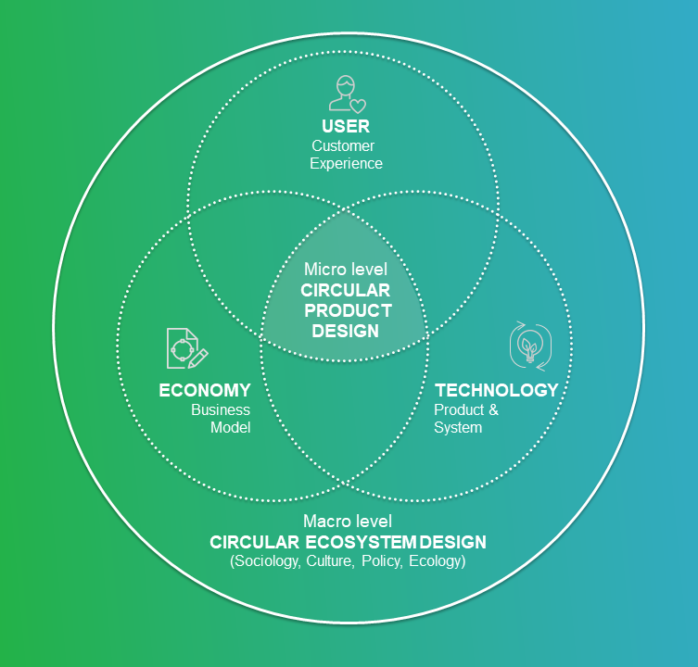
The way we design products, the way we use and handle them has more influence than we might think. New trends change the way we act as citizens, perceive and treat our society and the environment. The opportunities but also requirements for business within the circular economy demand for new capabilities within the design discipline. Adjusting our design process to these demands can ensure that all stakeholders contribute best to holistic sustainable solutions in a truly circular system. These are the skills designers will need:
- systemic thinking – the ability to analyse complexity in different domains (society, economy, environment..) across different scopes (local – gloabl, future -now,…).
- assess and understand impact – whether by external experts or adapted expertise this is crucial to create positive impact without causing unintended side effects or rebound effects. Be informed about latest recovery options to be able to select the right one for each use case or application.
- strategic and normative competencies – from manufacturing and logistics planning to user experience and value creation across the entire life cycles, circular design is only successful if implemented in the strategic decision making. Design concepts have to translate environmental and business objectives in desirable user experiences.
Why clients will pay for it
Whether market pressure, regulation, customer demand or conviction, all organizations have to change … but many are just overwhelmed by the complexity and do not know where to start.
Circular design in it’s holistic approach can help on all levels – from strategic design to a singular product design or communication campaign. Using the right methods at all stages can support select the right strategies, identify first stepping stones and actions and develop the product-service-systems to turn circular strategies into profitable offers. Help your clients with
- Strategic decisions – Facilitate the stratigic decision making with design research and methods and help identifying the unique path amongst the vast world of possibilites.
- Servitized business models – Extend extisitng products by servitized offers and help companies embrace the opportunities of digitalization for a sustainable business model
- Circular product and network design – By challenging established supply chains and consumption patterns circular design creates products and innovative production networks that allow clients to profit from reversed logistics, repairable products or shared sustainable usage models.
- Communicating efforts – Develop suitable communication strategies and campaigns adressing customers, business partners, employees and all stakeholders and help clients to benefit from the opportunities of collaborative, mutual business models.
Tools that help you design circular solutions
- 210
- 231
- 229
- 226
-
- Mural
Life Cycle Design
Develop a holistic product-service-system, discover and close gaps in the loops. To design products and services in a circular way, a holistic circular concept needs to be in place at the very beginning of the development. How can loops be closed, what operational requirements are needed, which partners can supply solutions and how can they benefit? This method helps ideate and develop solutions for all loops and the initial (product) design.
Tool DetailsBelongs to:- Learning Factory Learning Factory
-
- Mural
Current State Overview
Create a common understanding of the objectives of an organisation and the circular maturity. Is sustainability integrated in the company’s strategy? How? Get a first idea of maturity and circular potential. Executing this pre-task will ensure that a workshop has a smooth entry and framing for everyone. There’s one task for the team lead and another one for all participants.
Tool DetailsBelongs to:- Sprint Sprint
-
- Mural
Circular Idea (in a nutshell)
Having a very clear idea helps to communicate it. Describe your idea and point out how the organisation, the user and the environment benefit from your concept. This canvas can also be a starting point for the storyline of a pitch or presentation, in this case also think of the “WHY and HOW are you solving WHAT problem”.
Tool DetailsBelongs to:- Learning Factory Learning Factory
- Sprint Sprint
-
- Mural
Circular Design Brief
Defining the design brief is an important gate in the design process. Challenges are translated in opportunities, the scope and objectives of the project are defined. Contrary to “standard” design briefs, here environmental and user needs are equally valued and treated. Whereas in current business models those needs and objectives are often considered as contradictory or even opponent, in circular approaches they can be combined and even support each other.
Tool DetailsBelongs to:- Learning Factory Learning Factory
Identify the right strategy and steps for you and your clients
- 322
- 320
- 318
- 316
- 230
- 228
- 227
-
- Mural
Life Cycle Model
Asking the right question is the first step towards change! The two canvases reveal needs and questions around each phase of the life cycle and indicate many possibilities to increase positive impact and circularity.
Tool DetailsBelongs to:- Sprint Sprint
-
- Mural
Life Cycle Discussion
Asking the right question is the first step towards change! The canvas reveals needs for each phase of the life cycle. By asking crucial questions you can reveal and create many possibilities to increase positive impact and circularity.
Tool DetailsBelongs to:- Sprint Sprint
-
- Mural
Ecodesign Assessment Services
Understand the negative impact and potential for improvement by assessing the current solution and identifying opportunities. This tool can be used in different ways: to assess a benchmark or the current product or services or to compare ideas and concepts against a current solution.
Tool DetailsBelongs to:- Learning Factory Learning Factory
-
Ecodesign Assessment Product
Understand the negative impact and potential for improvement by assessing the current solution and identifying opportunities. This tool can be used in different ways: to assess a benchmark or the current product or services or to compare ideas and concepts against a current solution.
Tool DetailsBelongs to:- Learning Factory Learning Factory
-
Ecodesign Audit
To improve eco-innovation and eco-design performance organisations need a clear understanding of both their current and potential innovation and design capability as well as suitable strategies and practices. Based on expertise and experience, the audit covers different ecodesign/circular design aspects. It focuses on small and mid size organisations (SMEs) and aims to establish a basis for ramping up the circular product, service and business model innovation.
Tool Details -
- Mural
Circular Business Model
Is the business model sustainable economically? The Circular Economy requires new paradigms of doing business but once old patterns are overcome, new opportunities for prosperous business models that are beneficial for all are manifold. Use them!
Tool DetailsBelongs to:- Learning Factory Learning Factory
-
- Mural
Big Picture Setting
Where are we now, where do we want to be? This exercise aims to reflect the companys’ current vision and mission for the future. An examination of (environmental) megatrends and sustainability goals reveals actions and steps that need to be taken and potential to spur competitive advantages.
Tool DetailsBelongs to:- Sprint Sprint
Help companies to implement concepts successfully
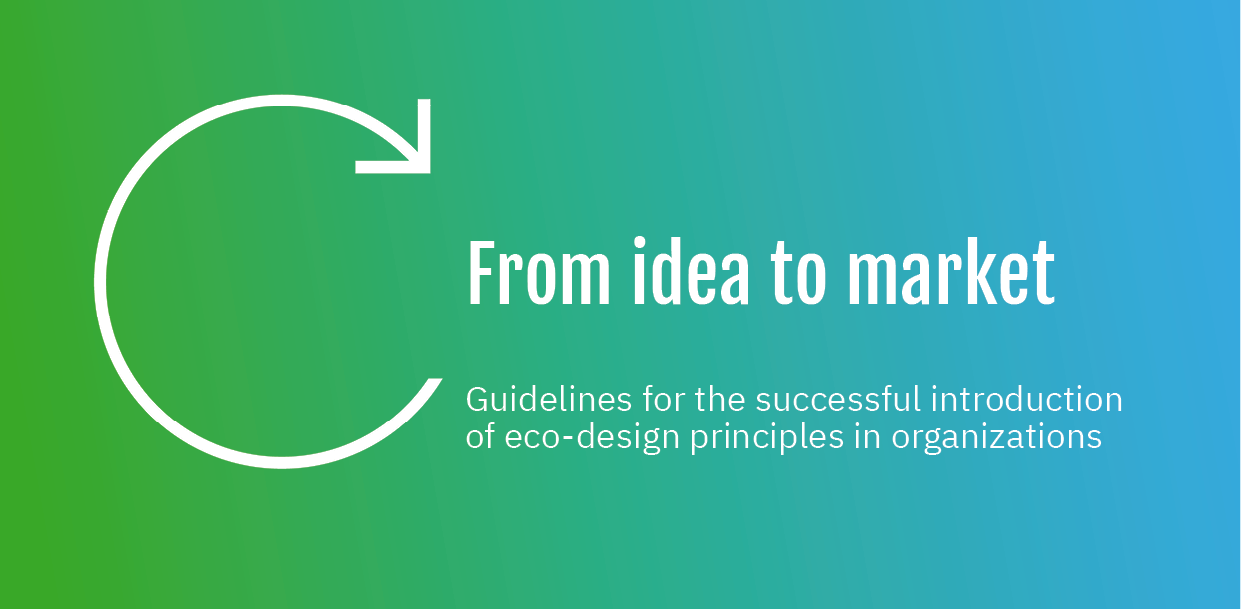 What differentiates organisations who successfully implement new ideas from those who do not adapt?
What differentiates organisations who successfully implement new ideas from those who do not adapt?
Read the full report on how to support companies on their venture from the idea to the market.


